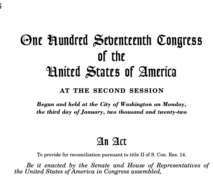EPA’s Cross-State Air Pollution Rule Will Have A Dramatic Impact on Texas and Louisiana
The Energy Law Blog
SEPTEMBER 15, 2011
By: Lesley Foxhall Pietras On August 8, 2011, the Environmental Protection Agency (EPA) published a far-reaching Clean Air Act rule intended to address the interstate transport of sulfur dioxide (SO2) and nitrogen oxides (NOx) from upwind to downwind states. See 76 Fed. 48208 (Aug. Tribune, Sept. See David E.













Let's personalize your content